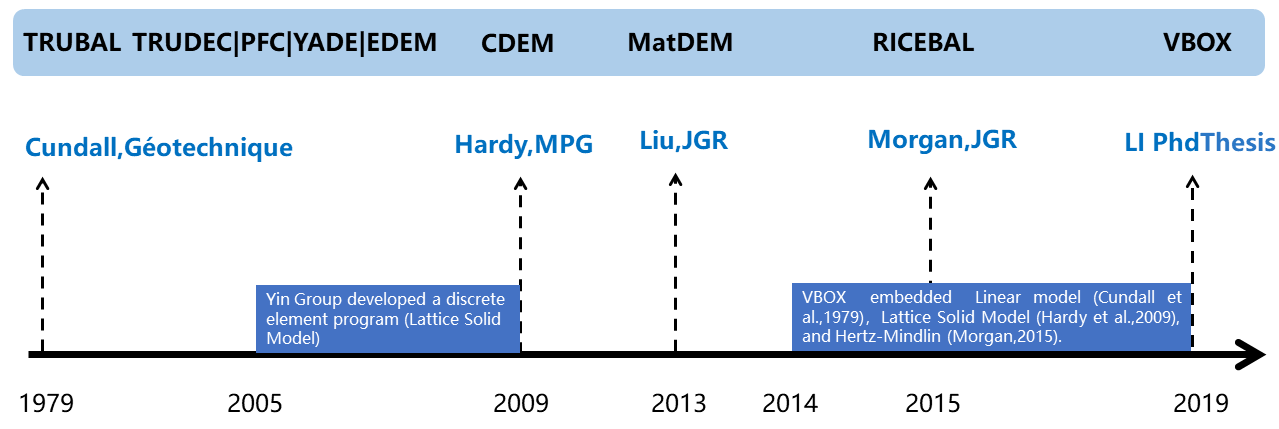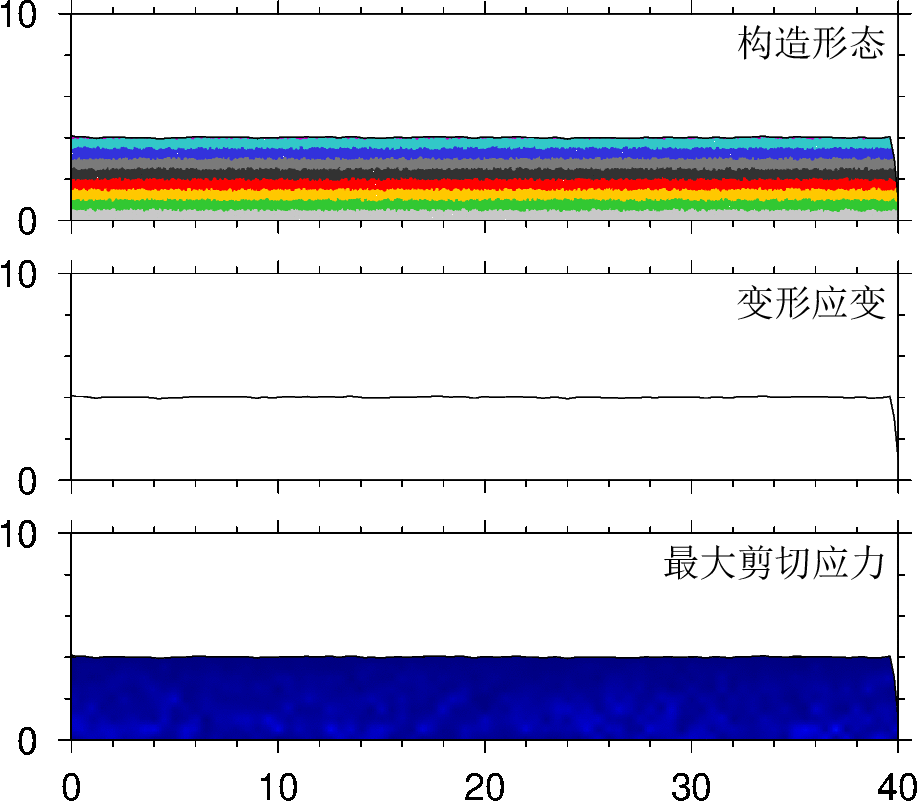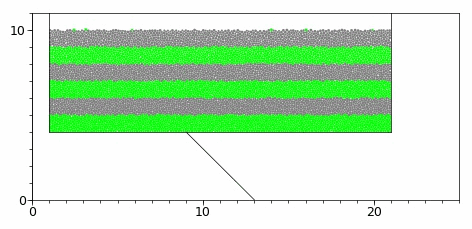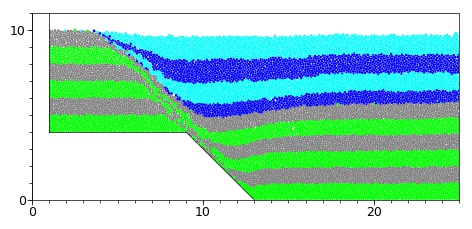Latest news
Video
Beginner's Tutorial for Discrete Element Method Numerical Simulation Software (ZDEM/VBOX)
February 2020
Speaker: LI ChangSheng
The video tutorial is approximately 2 hours long and is designed for beginners with no prior experience in ZDEM and VBOX. After completing this tutorial, users will be able to conduct numerical simulations.
Theory, Software, and Applications: Discrete Element Simulation in Structural Geology.
June 2020
Speakers: LI ChangSheng, XU WenQiao, XIN Wen
This course is offered to students of the School of Energy at China University of Geosciences (Beijing) and consists of three sessions.
Session One: Theory - Tectonic Simulation and Discrete Elements Method;
Session Two: Software - Introduction to ZDEM/VBOX and Operational Demonstration;
Session Three: Applications - Discrete Element Simulation in Structural Geology.
Cenozoic Structural Deformation and Simulation of the Longmen Mountains.
July 2020
Speaker: WANG MaoMao
This report is an invited presentation at the 14th Structural Network Forum on 'Tectonic Evolution of Orogenic Belts - Longmen Mountains' at the 2020 Youth Academic Forum on Structural Geology and Geodynamics.
Content Summary:
1. Eastern Edge of the Tibetan Plateau: Debate on Lower Crust Flow vs. Upper Crust Shortening;
2. Cenozoic Structural Deformation of the Longmenshan Thrust Belt;
3. Research Progress on Simulating Cenozoic Structural Deformation.
The numerical simulations in the report were conducted using ZDEM, and the simulation results effectively explain the differential distribution of structural strain in the Cenozoic foreland thrust belt of the Longmenshan. The experimental design and control of boundary conditions are commendable.
Basin Tectonic Analysis and Tectonic Modeling
2020年05月
Speaker: WU ZhenYun
This course is a graduate course titled 'Research Advances in Geological Resources and Geological Engineering' offered by the School of Earth Sciences at East China University of Technology.
Content Summary:
1. Introduction to basin (salt) structures and their significance in research.
2.How to conduct basin (salt) structure analysis and an introduction to key technologies.
3. Overview of structural physical modeling and numerical simulation techniques.
4. Introduction to the current research progress on salt structures in the Kuqa Depression.
Manual
Read online
PDF Download
Software

During the development of VBOX/ZDEM, We referred to a large number of materials, i.e., Linear model (Cundall et al.,1979),Lattice Solid Model (Hardy et al.,2009; Liu et al.,2013 ), and Hertz-Mindlin Morgan (2015), TRUBAL, RICEBAL, PFC2D users’ manual (Itasca,2004), YADE. If you are using VBOX for numerical simulations, you need to properly cite the appropriate literature.
-
Reference materials of VBOX:
- Script format: TRUBAL; RICEBAL; Lian et al.,1994; PFC2D users’ manual
- Linear model: TRUBAL; YADE; PFC2D users’ manual; Cundall et al.,1979
- Lattice Solid Model: Hardy et al.,2009; Liu et al.,2013; Li et al.,2021
- Hertz-Mindlin model: RICEBAL; YADE; PFC2D users’ manual; Morgan,2015
- Parallel computing: OpenMP
- Contact list: Lian et al.,1994; Wang et al.,1991; Wang et al.,1996
- Post-processing: The post-processing scripts and algorithms (GMT and MATLAB codes) of Julia K. Morgan; Morgan,2015
-
References
- TRUBAL https://hmakse.ccny.cuny.edu/software-and-data/
- DICE2D http://www.dembox.org/
- YADE https://yade-dem.org/doc/
- MatDEM http://www.matdem.com/
- Cundall, P. A., and O. D. L. Strack. (1979). A discrete numerical model for granular assemblies. Geotechnique, 29(1), 47–65.
- Wang Y. J., Xing J. B. (1991) Discrete element method and its application in rock and soil mechanics. Shenyang: Northeast institute of technology press (in Chinese)
- Lian G., Thomton C. and Kafui D. (1994). TRUBAL - A computer program for modelling particle assemblie. Aston University. UK
- Wang Y J, Liu L F. (1996) Formulation of a three-dimensional discrete element model-trudec system. Chinese Journal of Rock Mechanics and Engineering. 15(3): 201-210. (in Chinese)
- Itasca. (2004). PFC2D users’ manual (version 3. 1). Itasca Consulting Group, Inc., Minneapolis.
- Hardy S., et al (2009) Deformation and fault activity in space and time in high-resolution numerical models of doubly vergent thrust wedges. Marine and Petroleum Geology 26:232-248.
- Liu, C., Pollard, D. D., and Shi, B. (2013a). Analytical Solutions and Numerical Tests of Elastic and Failure Behaviors of Close-Packed Lattice for Brittle Rocks and Crystals. Journal of Geophysical Research: Solid Earth 118, 71–82.
- Morgan J. K. (2015) Effects of cohesion on the structural and mechanical evolution of fold and thrust belts and contractional wedges: Discrete element simulations. Journal of Geophysical Research: Solid Earth 120:3870-3896.
- Li, C. S. (2019). Quantitative Analysis and Simulation of Structural Deformation in
the Fold and Thrust Belt Based on Discrete Element Method. Doctor Thesis.
Nanjing, China: NanJing University.(in Chinese with English abstract) Download Latest revision Password
zdem - LI C.S., YIN H.W.*, et al. (2021) Calibration of the discrete element method and modelling of shortening experiments. Front. Earth Sci. 9:636512.
Users
- Hongwei Yin, Professor, Nanjing University
- Members: Wenqiao Xu, Gengxing Yang
- Graduated:Zhenyun Wu, Chuan Lin, Chuang Wu, Jiaxing Zhang, Yanjie Feng, Changsheng Li, Wei Wang, Huajing Wei
- Hengmao Tong, Professor, China University of Petroleum, Beijing
- Members:Kunze Xiao
- Zhenyun Wu, Associate Professor, East China University of Technology
- Maomao Wang, Associate Professor, Hohai University
- Hanlin Chen, Professor, Zhejiang University
- Shuwei Guan, Senior Engineer, Research Institute of Petroleum Exploration & Development
- Guangrong Li, Associate Professor, East China University of Technology
- Yangwen Pei, Associate Professor, China University of Petroleum (East China)
- Dengfa He, Professor, China University of Geosciences Beijing
- Feiyu Zhao, PhD, East China University of Technology
- Fangle Shen, Hebei GEO University
- Shichao Li, Professor, Jilin University
- Keji Yang, PhD, Hebei GEO University
- Weiwei Zhou, PhD, Kunming University of Science and Technology
- Yanqi Wang, PhD, Engineer Research Institute of Petroleum Exploration & Development
- Xin Yang Chengdu University of Technology
- Zhenle Chen, Researcher, Institute of Geomechanics, Chinese Academy of Geological Sciences
- Yangli Yu, PhD, SouthWest Petroleum University
- Gang Rao, Professor, SouthWest Petroleum University
- Jinhang Zheng, China University of Petroleum (East China)
- Huaibo Zhao, China University of Petroleum, Beijing
- Chao Zhou, University of Chinese Academy of Sciences
- Boyang Guo, BGP INC., CHINA NATIONAL PETROLEUM CORPORATION
- Wei Li, Associate Professor, China University of Petroleum (East China)
- Qi Yao, Associate Researcher, Institute of Earthquake Forecasting,CEA
- Chang Feng, Northeast Petroleum University
- Shuaijie Wang, China University of Geosciences Beijing
- Zixi Wang, China University of Geosciences Beijing
- Han Zheng, Associate Professor, Central South University
- Jingwen Hu, SouthWest Petroleum University
- Yaoyao Zou, Wuhan Geological Survey Center, China Geological Survey
- Zhe Wang, Northeast Petroleum University
- Yutao Liu, China University of Petroleum (East China)
Contact
Website Goals
- Provides high quality learning resources about VBOX and Discrete Element Model
- Constructs a leading structural numerical simulation laboratory
Contact Information
- Official QQ group: 432511425
- Address: School of Earth Sciences and Engineering, Nanjing University, Nanjing, China
- Suggestions and Contributions: sheng0619@163.com
Software Development and Website Maintenance
Acknowledgement
FENG YanJie (Nanjing University)
HUANG Qian (Nanjing University)
Julia K. Morgan (Rice University)
LIU Chun (Nanjing University)
LIN Chuan (Nanjing University)
TONG HengMao (Chain University of Petroleum)
SUN Chuang (Sun Yat-sen University)
WU Chuang (Nanjing University)
WEI HuaJing (Nanjing University)
WANG Wei (Nanjing University)
WU Zhunyun (East China University of Technology)
XU KunZe (Chain University of Petroleum)
XU WenJiao (Nanjing University)
YANG GenXiong (Nanjing University)
YIN HongWei (Nanjing University)
ZHANG JiaXing (Nanjing University)
ZHANG YinChun (Nanjing University)
Especially, we thank Julia K. Morgan for generously sharing the post-processing scripts and algorithms (GMT and MATLAB codes), which have been used to process and display the model outputs presented. Further details about these methods can be found in the following reference: Morgan (2015) (DOI: 10.1002/2014JB011455).




